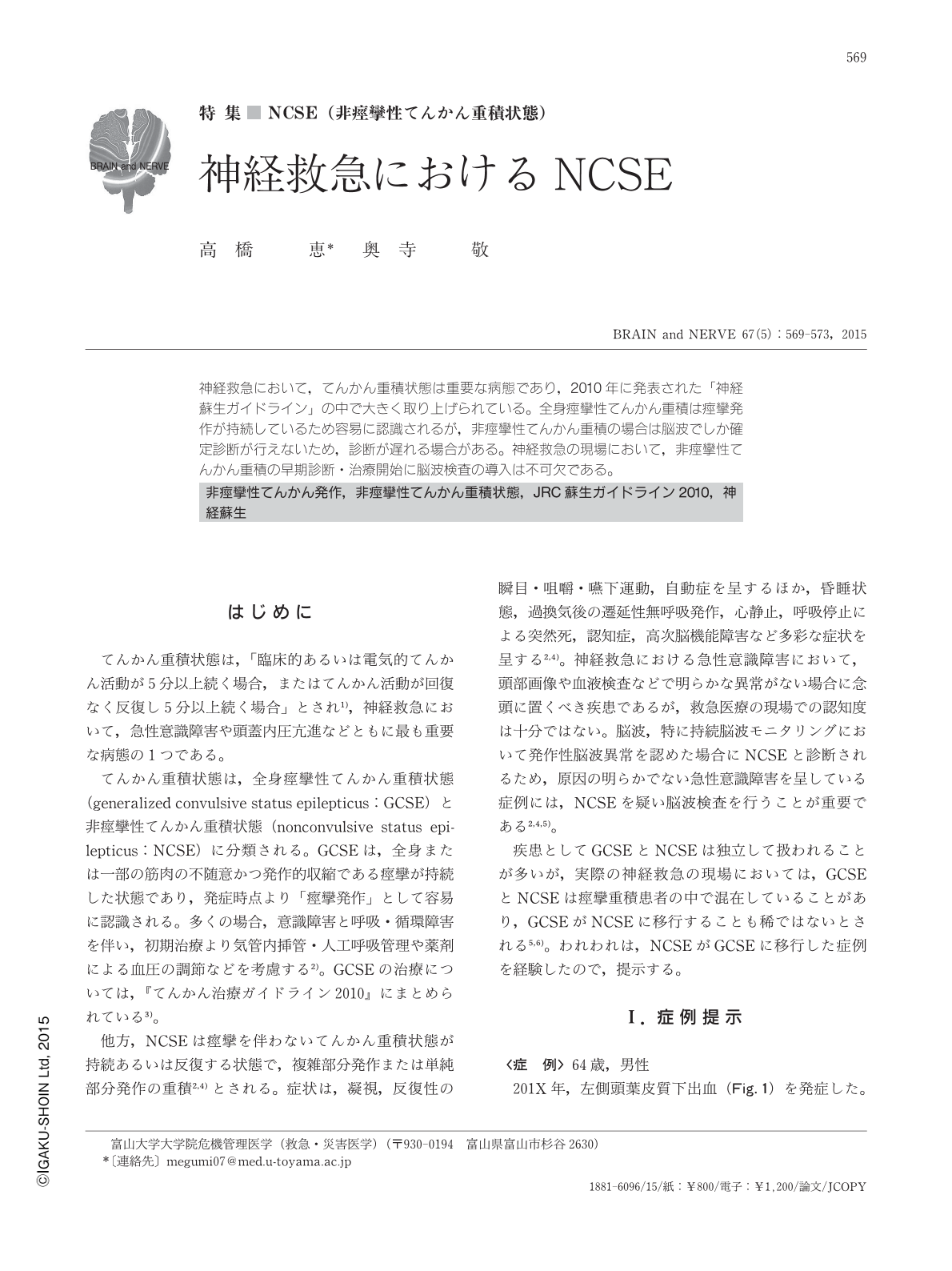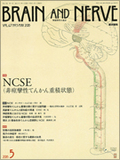Japanese
English
- 有料閲覧
- Abstract 文献概要
- 1ページ目 Look Inside
- 参考文献 Reference
神経救急において,てんかん重積状態は重要な病態であり,2010年に発表された「神経蘇生ガイドライン」の中で大きく取り上げられている。全身痙攣性てんかん重積は痙攣発作が持続しているため容易に認識されるが,非痙攣性てんかん重積の場合は脳波でしか確定診断が行えないため,診断が遅れる場合がある。神経救急の現場において,非痙攣性てんかん重積の早期診断・治療開始に脳波検査の導入は不可欠である。
Abstract
According to the 2010 neuroresuscitation guideline, status epilepticus (SE) is a critical condition that causes respiratory and circulation dysfunction, including "acute consciousness disturbance" and "elevated intracranial pressure." There are two types of SE: general convulsive SE (GCSE) and nonconvulsive SE (NCSE). GCSE is easily diagnosed because the patients show continuous convulsions. In contrast, NCSE can only be diagnosed by electroencephalography (EEG), which can delay diagnosis. Moreover, GCSE and NCSE occasionally manifest in the same patient and alternate. Here, we describe the case of a 64-year-old male patient who experienced losses of consciousness mimicking stroke. We could not diagnose these episodes as NCSE until the patient had a general continuous convulsion. In this case, the delayed diagnosis of NCSE resulted in uncontrollable GCSE that required intensive management, including mechanical ventilation under sedation. It is important to recognize that NCSE can cause consciousness disturbance and to initiate treatment as soon as possible to improve patient prognosis. This could be achieved by performing an EEG earlier, such as at the scene of emergencies.

Copyright © 2015, Igaku-Shoin Ltd. All rights reserved.


